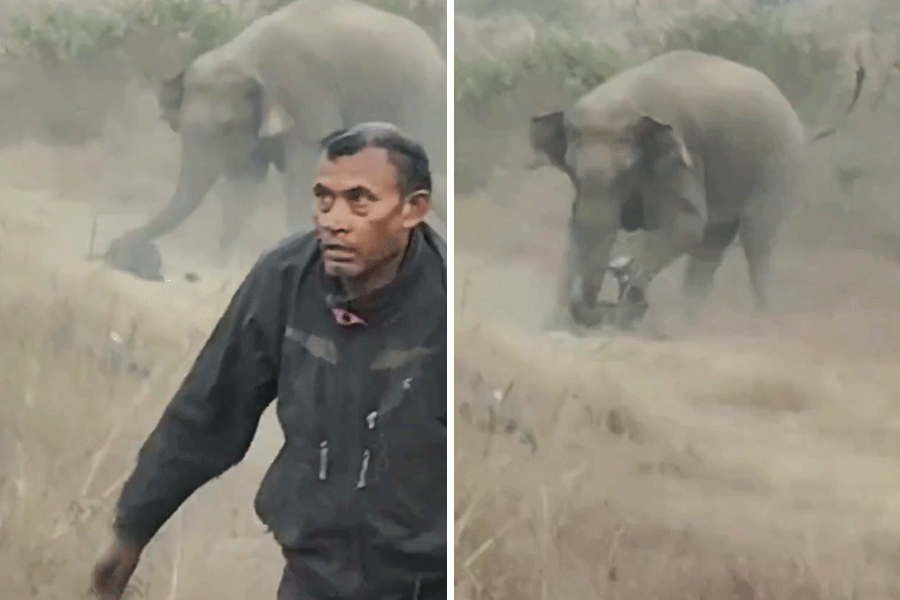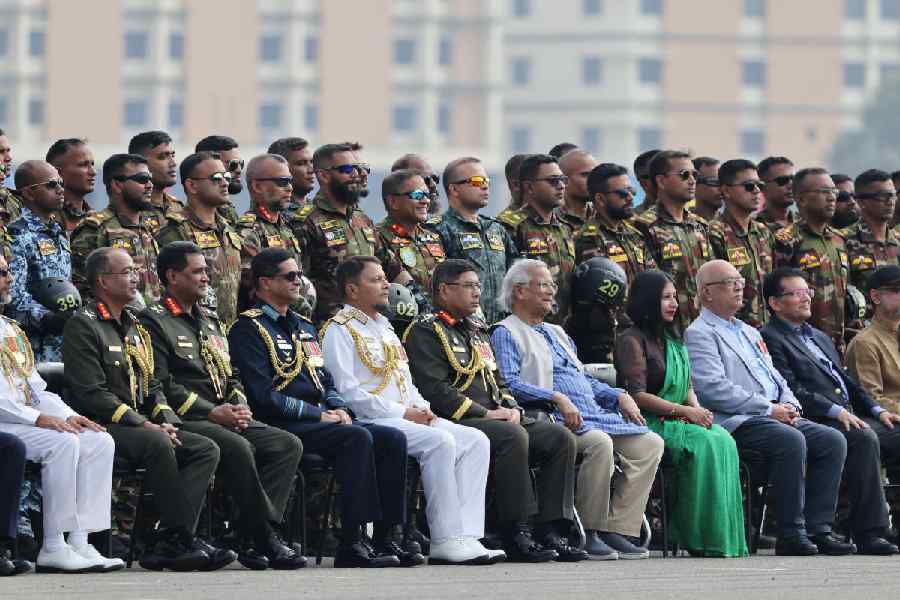 |
| GLOBAL CALL: Madhuri Sriharan (right) with consultant Dasari. Pictures by Sonia Sarkar |
The fourth lane in congested Brodipet in Guntur doesn’t look like a place where dreams are made. But boards on multi-storeyed buildings promise magic. And, indeed, for many young men and women in Andhra Pradesh, this is where the magical journey of life begins.
Flying to the United States? Want to work there? Need a visa? Or someone to fill your college form? Then step into Brodipet. This is where consultants help aspirants reach their ultimate destination — the United States of America. Billboards advertise all kinds of services — from providing software training and teaching English to processing applications for US universities.
“Guntur sends the maximum number of students from AP to the US,” says Raghu Korrapati, commissioner of higher education in South Carolina, US, who himself left Guntur 25 years ago to make a life in the US.
Madhuri Sriharan, 23, wants to join the ranks too. The electronic engineer from Guntur has been spending hours with his education consultant to make his F1 visa application — for studying in the US — look convincing. His application has been turned down thrice, and this time Sriharan is taking no chances. “I am hopeful,” he says.
It’s not just Guntur — students are looking at a future in the US from all over Andhra Pradesh. It’s a dream that the youth across India share, but nowhere is it more pronounced than in AP. “More than 50 per cent of Indian students who go to the US are from Andhra,” says Korrapati.
 |
The number of F1 visas issued by the US Consulate in Hyderabad endorses that. It jumped from 4,027 in 2009 to 6,361 in 2010 — marking a 58 per cent rise in a year. More visas are issued in the city than in Calcutta, which saw 1,233 students going to the US in 2009 and 1,386 in 2010.
Many of the young men and women have made their mark in the US, as students and professionals. But on the flip side, many of the horror stories concerning Indian students in the US have also revolved around the young from Andhra.
When the Tri-Valley University in California was closed — after its administration was accused of running a racket — last month, most of the students affected were from AP. Over 95 per cent of the 1,555 students studying in Tri-Valley were Indians. And all of them, barring 150 students, came from AP.
Akhil Babu (name changed) was one of them. The 23-year-old student left Hyderabad in August last year to study food sciences in the University of Wisconsin but later took a transfer to Tri-Valley.
“The annual fee in Wisconsin was $3,000 whereas Tri-Valley offered the course at three-fourth the cost. Plus, the university was allowing us to work. I thought it would help me repay my Rs 12-lakh education loan,” says Babu over the phone from California.
Clearly, Tri-Valley flouted rules to admit students. Korrapati adds that many students joined the university because it did not ask for the scores of regular examinations (such as a general aptitude test or an English language test) without which you cannot join an American university.
For young students with stars in their eyes, a university that was cheaper, easier to get into and allowed them to work acted like a magnet.
While pursuing a two-year postgraduation course at a US university, students are allowed to work 20 hours every week on the campus. After 18 months, they can work outside the campus.
“But this rule is flouted by low-rung universities and students are allowed to work anywhere outside from the very beginning. So students choose gas stations, cafes and grocery stores to make money,” says Janardhan Reddy, head of operations with an education consultants’ firm, Impel Overseas Limited, Secunderabad.
Earning money is important, for making it to the US is an expensive proposition. Students have to show that they have a healthy bank balance before a visa is issued to them.
For that money lenders — mostly cloth or gold merchants — step in, depositing Rs 20-25 lakh in a student’s account for a month or so. Once the visa is granted, they get their money back — along with an interest of Rs 1.2 lakh for Rs 20 lakh, says Vimal Srikanth Dasari, centre manager, Global Tree, an education consultancy firm in Guntur.
A student pays around Rs 10,000 for processing applications, Rs 5,000 each to software training institutes and language trainers to prepare him or her for language and other tests that open the doors to the US. The consultants earn Rs 20 lakh annually. “It is a Rs 100-crore industry with many players in it,” says Reddy.
And that’s no surprise, for every year over one lakh engineers graduate from the 300 engineering colleges in the state. With only 20 institutes offering postgraduate courses, most try to go abroad.
For many families, an offspring studying abroad is a sign of prestige. “It is an insult for those who cannot go abroad. So they can even beg, borrow or steal for accomplishing their big US dream,” says Chintha Ganesh, sociologist, Osmania University.
The students, mostly from middle-class families, are children of government officers, teachers or farmers. Areas such as Ameerpet in Hyderabad are the hubs for those eyeing the West. Consultants are to be found in every corner. Posters saying “Work and study in the USA” or “100 per cent placement in the USA” or “Step in as a student and step out as professional” cover the walls of buildings that house the training institutes.
Experts say that of more than 1,50,000 software jobs created in the US, around 30,000 go to people from AP. “Our people are very good in maths and physics. So they do extremely well in aptitude and reasoning tests. Also, they are hardworking and committed,” says Reddy. Not surprisingly, 9,897 HIB work visas were issued by the US consulate in Hyderabad in 2010, as opposed to 2,485 in Calcutta.
The last few years, however, have been difficult. The recession has led to people losing jobs in the US, and many have had to return. But with their indomitable spirit, they are making the most of their stay in India.
“Many of my students lost their jobs but are preparing to go back again after advanced training in software,” says N. Ramakoteswara Rao, who trains 5,000 aspirants every month at his software training institute, Peer Technologies, in Ameerpet.
Though most young men who leave AP don’t want to come back, NRI remittances are the highest in the state. “Andhra Pradesh stands first among Indian states, receiving nearly 22 per cent of total remittances. Much of this is due to the information technology professionals staying abroad,” says T.L.S. Bhaskar, who runs a non governmental organisation called Telugu Diaspora.
For some, the remittances have stopped for ever. In the last three years, 11 people from the state were killed in robberies and other such incidents.
Arun Narote, 26, was shot dead by unidentified gunmen in a gas station in Bridgeport last year. Arun worked part-time to fund his MS (mechanical) course. “There is no safety for Indian students. No one should work as part-timers in the US. We have learnt it the hard way,” says his brother, Avinash.
Saroja Goinaka can’t come to terms with her son’s death either. Prasanth, who was earlier studying at the International Technological University in California, moved to Oklahoma to be with his friends. “He started working at a grocery store there. Three days later, we learnt that he had been killed by unidentified robbers.” Saroja breaks down while narrating the story of a man who too once cherished a dream.
The land of milk and honey, for some, has turned sour.











